49 F. average high on March 31.
58 F. high reported on March 31, 2014.
.45" rain predicted this evening and tonight (NAM model)
82 F. record high for April 1 (set in 1882).

Lukewarm & Loud
"The weather is here, wish you were beautiful!" Thanks Dad. I wish my 84-year old father would stop sending me postcards.
"You must be popular today" a bank teller gushed yesterday. It'll pass, I replied.
But the older I get the more I force myself to savor the good times. Being in the moment, right? Hold on. I think I can photograph this springy sky with my smartphone as soon as I answer this text and respond to 213 e-mails in my in-box.
Do yourself a favor: take a mental health break and sneak outside today, as we enjoy the warmest day since the mercury hit 72 degrees on October 16, 2014. Long-lost neighbors will emerge from hibernation, squinting up at the sun.
The atmosphere overhead may be unstable enough to spawn a few cauliflower clouds by the dinner hour - thunderheads capable of small hail and gusty winds. The threat of severe weather is greatest south of MSP. NOAA's NAM model prints out over half an inch of rain tonight. I'm skeptical but I hope it's right.
We cool off later in the week, in fact brisk sweatshirt weather lingers into next week, with a better chance of rain Monday and Tuesday - possibly mixed with slushy snow up north.
Don't write off winter just yet. Sorry.
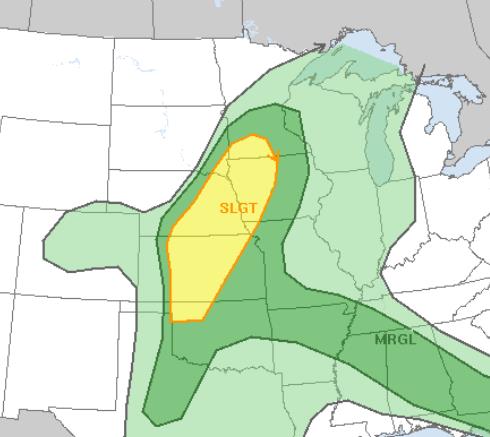
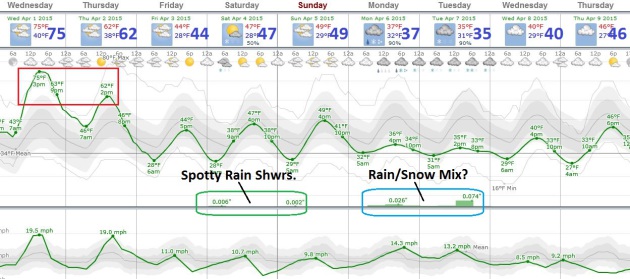


Surprising Research About Weather And Your Mood. Here's a snippet from a story at About Health: "...The commonly held belief that sunny bright days and pleasant weather generally makes people happier was not supported by this research. It was determined that temperature, wind and level of sunlight had a significant effect on negative mood. Sunlight also seemed to have an effect on participants' energy level. The authors speculated that sunlight's effects on tiredness may have something to do with Vitamin D3, which is indicated in the production of serotonin. Serotonin is a neurotransmitter that is involved with mood and level of energy..."
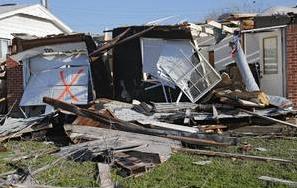
Photo credit above: "Storm damage to a home in Moore, Okla. on Thursday, March 26, 2015. A tornado hit the area on Wednesday evening causing damage in the area." Photo by Chris Landsberger, The Oklahoman.

Is Moore, Oklahoma The Tornado Alley of Tornado Alley?
What is going on in Moore, hit by 3 monster EF-5 tornadoes since 1998;
10 separate tornadoes within the town limits since 1998, including last
Wednesday. Here's an excerpt from Yahoo News: "...The longtime meteorologist, author and founder of the Tornado Project database
said that anything at this point would be a hunch. Historically, the
most intense twisters used to strike northwest of Oklahoma City. Now
those storms, he said, seem to track southeast of the capital city.
Whether that’s due to climate change or random clustering is anyone’s
guess, Grazulis said. “If you flip coins, you’ll get so many in a row.
Then you won’t get any in a row,” he said. “It’s a tough one...” (File photo: Brittney Misialek, NOAA SPC).
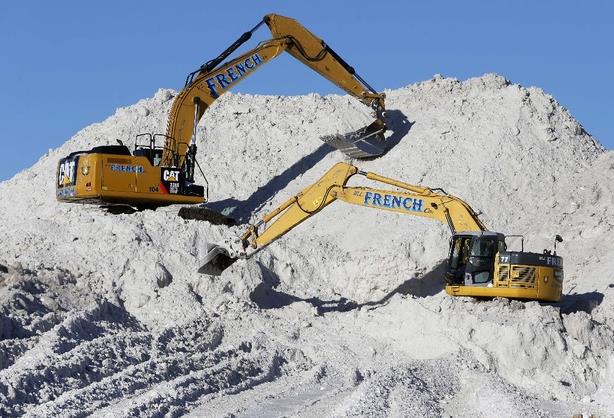
Photo credit: Michael Dwyer, AP.
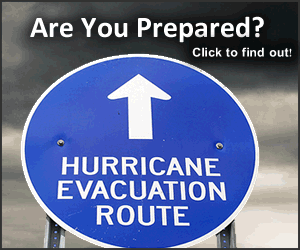

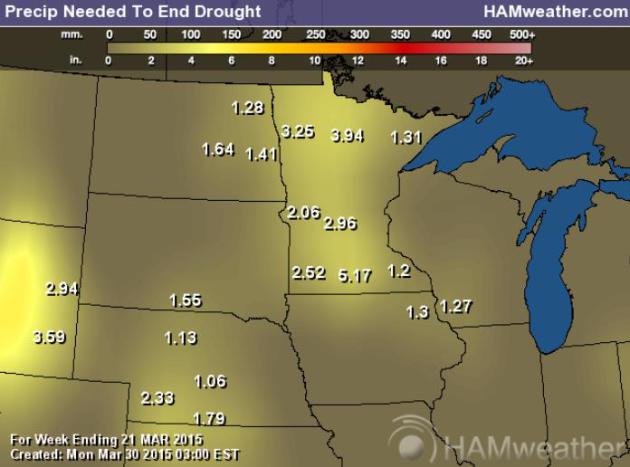
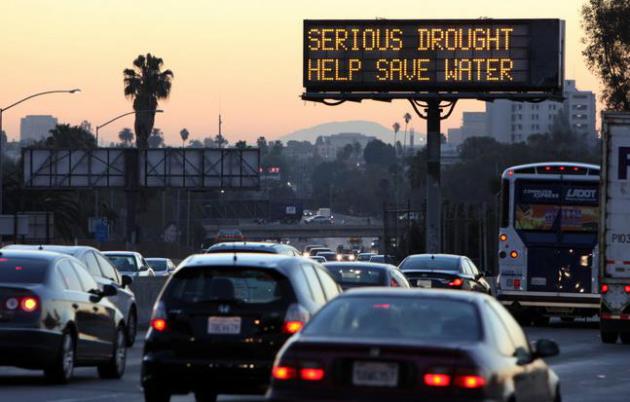
California Farmers Near "Survival Mode" As Drought Drags On. NBC News has the video and story details; here's a snippet: "...Economists
and researchers so far haven't hit the panic button, and aren't
forecasting a widespread spike in consumer food prices. That's in part
because of crop diversity. If there's a significant drop in
California-grown rice for example, rice farmers in the South might shift
some production to fill the gap. But everyone knows mountain snowpack
levels are low, and many farmers are already hunkering down for another
year of water cutbacks. Vast tracts of farmland have been fallowed,
which basically means idling cropland to accumulate moisture. Some
communities have been short on drinking water..." (File photo: AP Photo/Richard Vogel, File).
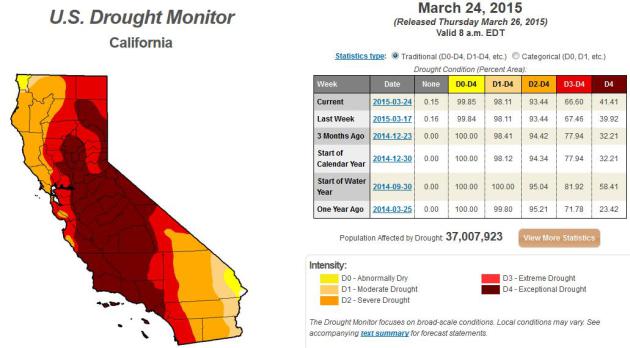
* Latest U.S. Drought Monitor for California is here.
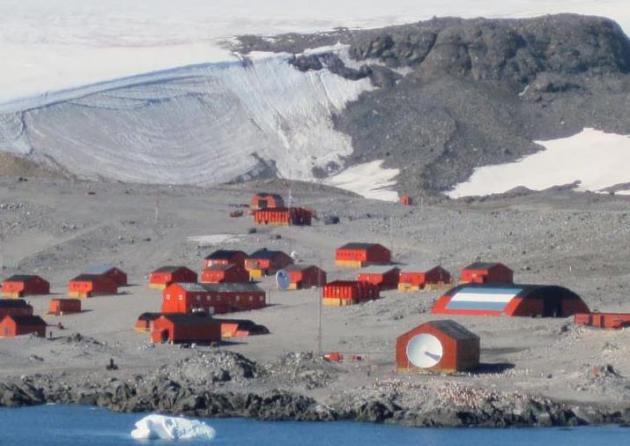
Image credit: "Argentina’s Esperanza Base on the northern tip of the Antarctic Peninsula. It is located near 63°S latitude." Image from Wikipedia.



How To See Disaster Coming.
Are natural disasters truly unpredictable or is their method to the
(apparent) madness...and randomness? Here's an excerpt of a very
interesting article at Pacific Standard Magazine: "...Forecasting catastrophe is hot stuff
these days, but it remains a tricky business. In order to make accurate
predictions about some of the world's most complex systems, including
earthquakes, financial markets, and even our brains, researchers need
accurate models. Yet many current models make the unrealistic assumption
that the world is deterministic; that is, that the future is perfectly
predicable based on its present state. In reality, the world is usually a
little bit random—what scientists call stochastic.."

Image credit above: "The technique uses satellite radar imagery to observe ground displacement, giving researchers rapid insights into the impact of earthquakes." (Image: ESA/University of Iowa).
The
past winter was globally the warmest on record. At the same time it set
a new cold record in the subpolar North Atlantic – and it was very cold
in the eastern parts of North America. Are these things related?
Two weeks ago NOAA published the following map of temperature anomalies for the past December-January-February (i.e. the Northern Hemisphere winter). One week ago, we published a paper in Nature Climate Change (which had been in the works for a few years) arguing that the cold in the subpolar North Atlantic is indicative of an AMOC slowdown (as discussed in my last post).
- See more at: http://www.realclimate.org/index.php/archives/2015/03/a-hypothesis-about-the-cold-winter-in-eastern-north-america/#sthash.LPZr0qKX.dpuf
Two weeks ago NOAA published the following map of temperature anomalies for the past December-January-February (i.e. the Northern Hemisphere winter). One week ago, we published a paper in Nature Climate Change (which had been in the works for a few years) arguing that the cold in the subpolar North Atlantic is indicative of an AMOC slowdown (as discussed in my last post).
- See more at: http://www.realclimate.org/index.php/archives/2015/03/a-hypothesis-about-the-cold-winter-in-eastern-north-america/#sthash.LPZr0qKX.dpuf

* Is The Definition of Adulthood Changing for Millenials? The Guardian has the story.



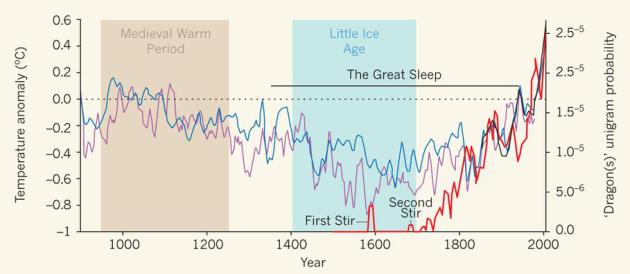
Image credit above: "The relative frequency of 'dragons' in fictional literature (thick red line), as determined as a unigram probability4, with two historical reconstructions of Northern Hemisphere temperature (decadal smoothing) shown in blue5 and purple6. Global temperatures have been measured since 1855 (thick black line5). Temperature anomalies represent deviations from the 1961–90 reference period. The rising incidence of dragons in the literature correlates with rising temperatures, and suggests that these fire-breathing lizards are being sighted more frequently. As a result, the large-scale 'Third Stir' is deemed to be imminent."
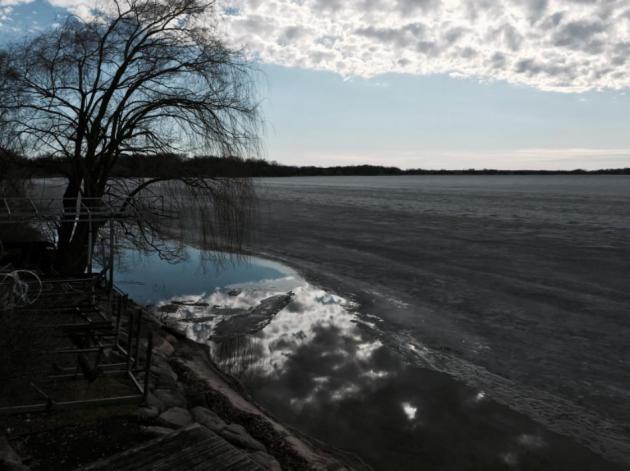
TODAY: Fading sun, windy and warm, late-day T-storms. Winds: S 20-35. High: 73
WEDNESDAY NIGHT: Showers and T-storms, locally heavy rain possible. Low: 45
THURSDAY: Mostly cloudy, cooler breeze kicks in. High: near 60
FRIDAY: Intervals of sun, brisk for April. Wake-up: 31. High: 47
SATURDAY: Patchy clouds, isolated shower. Wake-up: 30. High: 46
SUNDAY: Lingering clouds, still raw. Wake-up: 33. High: 49
MONDAY: Cold rain develops. Wake-up: 35. High: 45
TUESDAY: Heavier rain possible, still chilly. Wake-up: 36. High: near 50
Climate Stories....
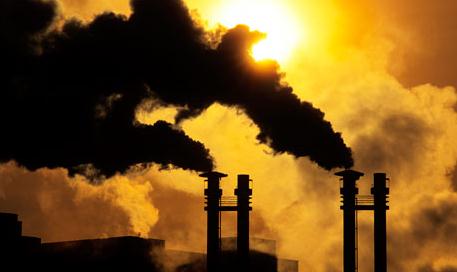
Obama Offers Major Blueprint on Climate Change. The New York Times reports; here's the introduction: "The
White House on Tuesday morning unveiled President Obama’s blueprint for
cutting United States greenhouse gas pollution by nearly a third over
the next decade. Mr. Obama’s plan, part of a formal submission to the
United Nations ahead of efforts to forge a climate change accord in Paris in December, detailed the United States side of an ambitious joint climate change pledge the president made in November in Beijing with the Chinese president Xi Jinping..."

Florida's Climate Denial Could Cause Catastrophic Recession.
The same people who fear Big Government getting bigger may be the first
ones with their hands out, asking FEMA for help after the next
inevitable mega-storm. Here's an excerpt from ThinkProgress that caught my eye: "...But
the joke is on all of us: Florida has led the way in all but ignoring
the growing twin threats created by human-caused climate change — sea
level rise and superstorm surge — thereby creating a trillion-dollar
real-estate bubble in coastal property. When the next superstorm like
Katrina or Sandy makes its target Florida and bursts that bubble, the
state can declare bankruptcy. So too could some insurance companies. But
taxpayers — you and I — will get the several hundred billion dollar
bailout bill..."
Photo credit above: "Miami
streets see heavy flooding from rain in September 2014. Some
neighborhoods flood regularly during deluges or extreme high tides." CREDIT: AP Photo/Lynne Sladky.

Forget "Bans" On Talking About Climate. These Florida Republicans Are Too Busy Protecting Their Coasts. Not all Republicans deny the science. Here's the intro to a story at The Washington Post: "Patty
Asseff, a longtime realtor and a Republican, drives through town in her
jet black Tesla. Asseff, who has sold so many homes here, speaks with
passion about two related matters — clean energy, and making Hollywood
homes more resilient, not just against hurricane threats but against
periodic flooding that seems to be worsening as sea levels rise..."
Photo credit above: "Hollywood, Fla., Commissioner Patty Asseff." (Angel Valentin for The Washington Post)

Natural Variability Could Slow The Pace of Arctic Summer Sea Ice Loss, Study Says. Carbon Brief has the story - here's an excerpt and link: "Natural
fluctuations in the oceans and atmosphere are currently conspiring to
amplify the impact of manmade global warming on summer Arctic sea ice,
according to a new paper. Were these different cycles to weaken or
reverse, they could instead dampen the warming effect in the Arctic, and
slow the rate of Arctic sea ice loss, the author says..."
Graphic credit above: "Average September Arctic sea ice extent from full satellite record (1979-2014), Source: NSIDC.

Retro News: Cronkite's 1980 Global Warming Alert. I wonder what good old Walter would say if he was still on the air today? Here's an excerpt from a post at The Daily Climate: "On
April 3, 1980, Cronkite tossed to a news piece from CBS veteran Nelson
Benton. Thirty-five years ago, for two and half minutes – an eternity
even then by TV news standards and a near-impossibility today – a
broadcast anchored by The Most Trusted Man in America tried to warn us
about climate change. Actually, "climate change" wasn’t mentioned in
Benton's piece, but CO2, "global warming" and the "Greenhouse Effect"
were..."
Image credit: Bill Ingalls, NASA.
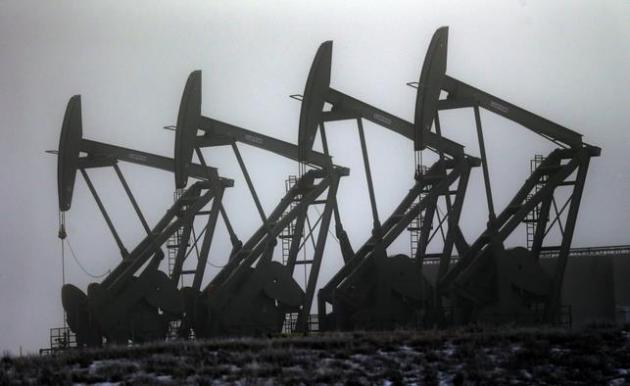
The Hidden Effects of Cheap Oil. The Atlantic
takes a look at the states and countries being impacted by swooning oil
prices and longer-term implications; here's a clip: "...According to Goldman Sachs, $1 trillion worth
of investments in energy projects could now be at risk. In the long
run, this may mean less oil production and higher energy prices. But in
the short run, the abrupt disappearance of this enormous investment flow
is bound to hurt energy companies—and especially their equipment
suppliers and the construction and engineering firms that were planning
to execute these projects. It will also hurt the cities and regions,
from Texas to Lagos, where these companies operate..."
File photo: AP Photo/Eric Gay.
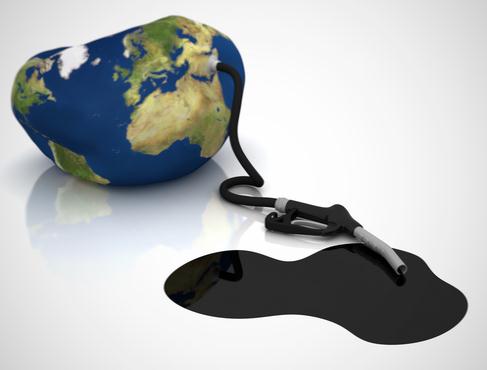
The Fossil Fuel Path is Immoral and Financially Imprudent.
This Op-Ed is really quite remarkable, written by the relatives of John
D. Rockefeller, which founded what is now ExxonMobil. They argue that
what was right once, is now wrong. If John D Rockefeller were alive
today, he’d be as visionary about green energy as once he was about
black crude. Here's an excerpt at The Guardian: "The
science leads to two conclusions, both of which prompted the
Rockefeller Brothers Fund, a foundation led by both family and
non-family trustees, to begin divesting its holdings in fossil fuels.
The first is that it’s immoral to continue down the fossil fuel path.
We know that alternatives exist – indeed, late last year the
International Energy Agency said that for the poorest people on earth, solar energy was a better path even than cheap coal for getting the energy they desperately need..."

Carbon Capture. Author Jonathan Franzen asks if climate change has made it harder for people to care about conservation in The New Yorker; here's a clip: "...Maybe
it’s because I was raised as a Protestant and became an
environmentalist, but I’ve long been struck by the spiritual kinship of
environmentalism and New England Puritanism. Both belief systems are
haunted by the feeling that simply to be human is to be guilty. In the
case of environmentalism, the feeling is grounded in scientific fact..."

There's a Scientific Consensus on Climate Change? Pacific Standard Magazine has the story of consensus and messaging; here's an excerpt: "A resounding 97 percent
of climate experts agree that climate change is both real and, at least
in part, caused by human activities. But a huge chunk of the American
public remains ignorant of this consensus, making it difficult to start
conversations on the subject on firm factual ground. According to the most recent numbers from Gallup,
only 60 percent of Americans expressed agreement with the understated
assertion that “most scientists believe global warming is occurring...”

Photo credit upper left: "A photo taken from the Muir Inlet in Glacier Bay National Park and Preserve, Alaska between the 1880s and 1890s, shows the 328-foot-high terminus of the glacier and numerous icebergs, some more than 6 feet in diameter." (Glacier Bay National Park and Preserve Archive).
Photo credit upper right: "A northwest looking photograph taken from the same location in 2005 shows that the Muir Glacier has retreated more than 31 miles and is completely out of the field of view. The glacier in the background to the right is Riggs Glacier. Abundant vegetation is visible." (Bruce F. Molnia/USGS).
No comments:
Post a Comment